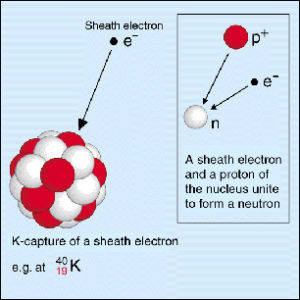
EXAMPLE OF ELECTRON CAPTURE WINDOWS
“Electron capture” By Master-m1000 – and self-made.I am using Electron to create a Windows application that creates a fullscreen transparent overlay window. “Beta-plus Decay” By Master-m1000 – Own work based on: Beta-minus Decay.svg by Inductiveload (Public Domain) via Commons WikimediaĢ. “Decay Pathways.” Chemistry LibreTexts, Libretexts, 10 June 2017, Available here. “Electron Capture Definition.” ThoughtCo, Jun. The main difference between positron emission and electron capture is that, in positron emission, a proton inside the radioactive nucleus is converted into a neutron while releasing a positron whereas, in electron capture, a proton-rich nucleus of a neutral atom absorbs an inner shell electron which then converts a proton into a neutron emitting an electron neutrino. Positron emission and electron capture are two such pathways. Radioactive decay of an unstable isotope of a particular element converts that isotope into a different isotope of a different chemical element. Positron Emission:Positron emission occurs as a conversion of a proton into a neutron, positron and an electron neutrino.Įlectron Capture:Electron capture occurs as a conversion of a proton into a neutron and an electron neutrino by absorbing an inner shell electron. Positron Emission: Positron emission emits a positron along with an electron neutrino.Įlectron Capture:Electron capture emits an electron neutrino and gamma radiation. Positron Emission:Positron emission is a type of radioactive decay in which a proton inside a radioactive nucleus is converted into a neutron while releasing a positron and an electron neutrino.Įlectron Capture:Electron capture is a type of radioactive decay in which the nucleus of an atom absorbs an inner shell electron and converts a proton into a neutron, releasing an electron neutrino and gamma radiation.



In positron emission, a proton inside the radioactive nucleus is converted into a neutron while releasing a positron in electron capture, a proton-rich nucleus of a neutral atom absorbs an inner shell electron which then converts a proton into a neutron, emitting an electron neutrino. Both these processes take place in proton-rich nuclei. Electron capture is a process which emits an electron neutrino. Positron emission is the release of a positron and an electron neutrino in the process of radioactive decay. There are different decay pathways such as positron emission, negatron emission and electron capture. Radioactive decay causes an isotope of a particular element to be converted into an isotope of a different element. Therefore, in order to become stable, these isotopes undergo a spontaneous process called radioactive decay. There are certain naturally occurring isotopes that are unstable due to the imbalanced numbers of protons and neutrons they have in their nucleus of atoms. Main Difference – Positron Emission vs Electron Capture


 0 kommentar(er)
0 kommentar(er)
